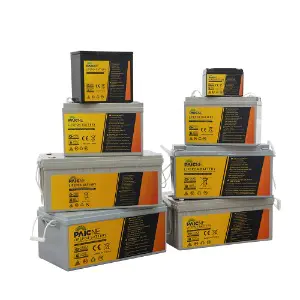Introduction to Internal Resistance in Lithium Iron Phosphate Batteries
Internal resistance is a critical parameter that significantly influences the overall performance and efficiency of lithium-ion batteries, including Lithium Iron Phosphate Battery technology. It refers to the opposition within the battery to the flow of electric current, which results from both the electrochemical reactions inside the cell and the physical characteristics of the battery components. Changes in internal resistance can affect battery capacity, power output, charging behavior, heat generation, and ultimately the lifespan of the battery.

Causes of Internal Resistance Variation
Several factors contribute to fluctuations in internal resistance during the lifecycle of a Lithium Iron Phosphate Battery. Aging and repeated charge-discharge cycles cause degradation of the electrode materials, electrolyte decomposition, and the formation of solid electrolyte interphase (SEI) layers, all of which increase resistance. Temperature also plays a crucial role; at low temperatures, ionic conductivity decreases, resulting in higher internal resistance. Similarly, manufacturing defects or mechanical damage can introduce inconsistencies that elevate resistance.
Effects on Battery Capacity and Power Delivery
An increase in internal resistance directly causes a reduction in the effective capacity of the battery. Higher resistance causes a voltage drop under load, meaning that the battery cannot maintain the required voltage for longer durations, effectively reducing usable capacity. This phenomenon is particularly noticeable during high current draws, where voltage sag can impair device performance or cause system shutdowns. Furthermore, power delivery is compromised as the battery must work harder to meet energy demands, which stresses the cell and accelerates degradation.
Influence on Charging Efficiency and Heat Generation
Internal resistance impacts not only discharging but also charging efficiency. When resistance rises, more energy is lost as heat during both charging and discharging cycles. Excess heat generation is detrimental as it can accelerate chemical side reactions inside the battery, causing faster aging and potential safety hazards. Effective thermal management becomes more challenging, and the battery may require reduced charging rates to avoid overheating. This situation can lengthen charging times and reduce the overall system efficiency.
Relationship to Battery Lifespan and Safety
The gradual increase of internal resistance is one of the key indicators of battery aging and impending failure. As resistance rises, the battery’s ability to deliver energy reliably diminishes, and internal heat generation increases the risk of thermal runaway under certain conditions. Monitoring internal resistance provides valuable information for predictive maintenance and safe operation. Lithium Iron Phosphate Batteries generally have lower internal resistance increases compared to other lithium-ion chemistries, which contributes to their longer cycle life and improved safety profile.
Monitoring and Managing Internal Resistance
Modern battery management systems (BMS) often include internal resistance monitoring as a diagnostic tool. By regularly measuring resistance changes, the BMS can estimate the state of health (SOH) and recommend maintenance or replacement before catastrophic failures occur. Additionally, design improvements such as optimized electrode materials, enhanced electrolytes, and better manufacturing controls aim to reduce resistance buildup. Users can also mitigate internal resistance growth by avoiding temperatures, using appropriate charging protocols, and preventing deep discharges.
Internal resistance plays a pivotal role in determining the performance, efficiency, and longevity of Lithium Iron Phosphate Batteries. Variations in resistance affect capacity, power output, heat generation, and overall safety. Understanding these impacts allows for better battery design, management, and usage practices, ensuring that Lithium Iron Phosphate Battery systems operate reliably and safely throughout their intended lifespan
Get to know quickly
We are a professional lithium iron phosphate battery, solar energy storage system, industrial and commercial energy storage system manufacturer.
 +86-133 3592 3377
+86-133 3592 3377
 +86-4008833583
+86-4008833583
 Email: [email protected]
Email: [email protected]

Copyright © Zhejiang Paichen Energy Storage Group Co., Ltd All Rights Reserved.
Battery Energy System Manufacturer
